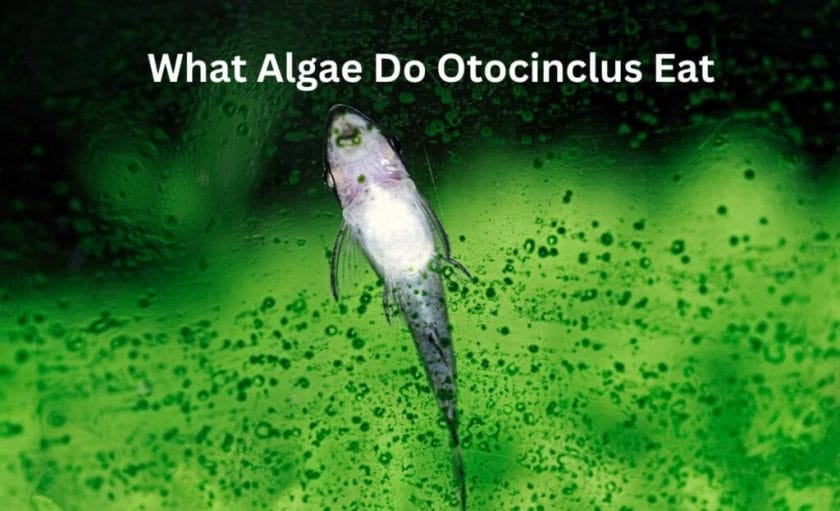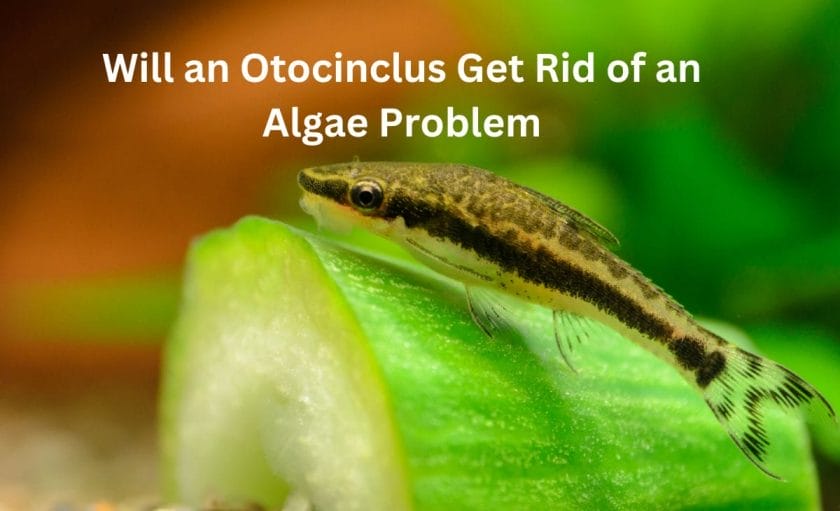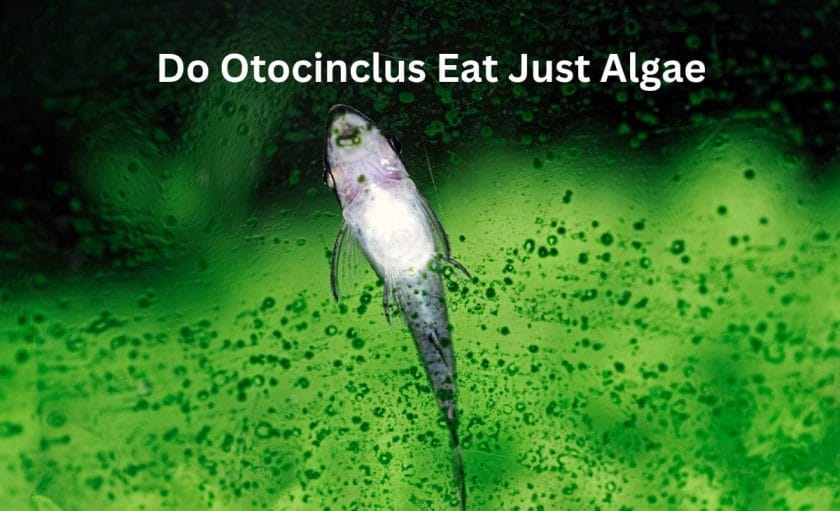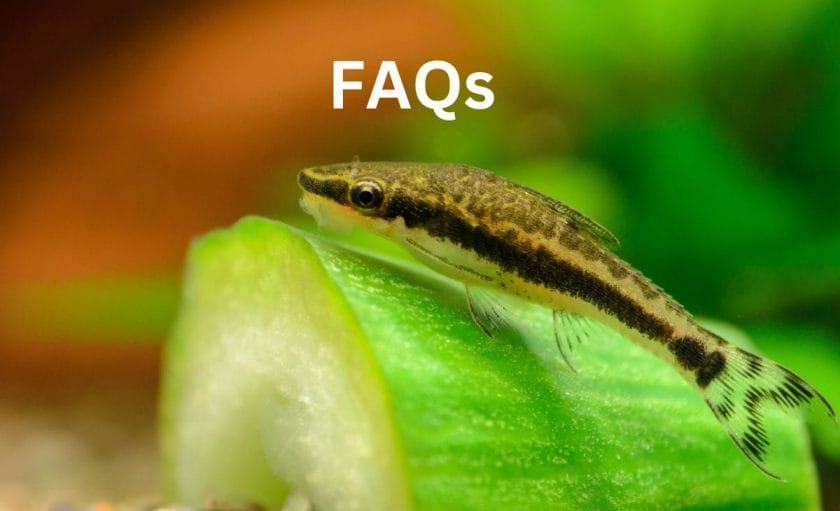Otocinclus are a popular and peaceful fish widely available in pet stores. They’re small, skittish, and easy to care for. If you’ve got lots of algae in your tank, then you may be wondering whether these little catfish are right for your tank.
Otocinclus are exceptional at eating algae; in fact, the majority of their diet consists of algae, and they are widely considered to be one of the best catfish for dealing with algae. They will consume biofilm, green algae, and brown algae in a small pond or aquarium.
These tiny fish are a great cleanup crew, and the best part is that they eat algae without nibbling on aquarium plants!
Keep reading, because I’m going to provide lots of helpful information about otocinclus, how much algae they eat, and whether you should include them in your tank.

Table of Contents
What Algae Do Otocinclus Eat?

Most tanks will deal with algae at some point in time, and not all algae is the same. Green algae in a tank, for example, can be a positive indicator that your tank is equipped to support biodiverse life. Still, as with anything, too much algae can be a problem, stagnating the water and competing with plants and fish for oxygen.
Otocinclus are part of a holistic solution to algae in a tank, although not every type of algae. Otocinclus will gobble up green algae and biofilm in a tank, but they will not eat black beard algae, hair algae, or green spot algae. These types of algae are too hard or too distasteful for Otocinclus to eat.
There are some species that will eat these harder algaes, such as the Siamese Algae Eater, but you shouldn’t exclusively rely on an all-rounder fish to take care of your algae problems.
Will an Otocinclus Get Rid of an Algae Problem?

Otocinclus love to eat algae, but they should be bought to clean the tank, not fix algae problems. In fact, adding more fish, who contribute their own waste to a tank, can actually exacerbate an algae problem.
Otocinclus are exceptional at eating algae; they can have your glass looking crystal clear in no time, but if your tank conditions are ripe for an algae bloom, they will not be able to keep up.
In short, no, an otocinclus (or a group of them) cannot fix your algae problem. Instead, focus on where your tank is and how you are caring for the tank.
Overfeeding Causes Algae Growth
Overfeeding is the #1 cause of algae blooms in a tank. Too much food provides an abundance of resources for algae to grow, and where there’s abundance, there’s reproduction. Reduce the amount you feed your tank if you find leftovers after about half an hour.
At that point, your fish are done eating, and any excess is just food for the algae. Use an aquarium net to remove excess food and debris, as these can be ammonia sources you don’t want in your tank and can indirectly contribute to the growth of algae.
Excess Sunlight Encourages Algae Growth
You might also want to consider where your tank is, as excess sunlight can encourage algae growth. A lack of water movement through airstones and filter flow or an underequipped filter can also worsen the problem.
The best way to get rid of algae is to do your research and consider what’s afflicting your tank as a whole, not to continue adding fish in the hopes they’ll deal with the problem. Test your water parameters regularly to keep your tank within optimal ranges. I recommend this API Test Kit, as it’s what I’ve used throughout my fishkeeping hobby.
It’s simple, easy to test, and provides you quick results, as well as a color-graded scale to see whether your tank parameters are within ideal ranges.
Do Otocinclus Eat Just Algae?

Otocinclus can thrive on algae predominantly and need it as part of their diet; however, they do also need some veggies for their wellbeing. Your tank should have plenty of algae if you’re going to accommodate otocinclus, but if you want to supplement their diet, algae wafers are a great pick. I love Hikari Algae Wafers. They sink quickly, other fish don’t bother with them, and they’re packed full of goodies.
Some veggies that otocinclus love include the following:
- Cucumber
- Zucchini
- Carrots
- Celery
- Spinach
- Lettuce
- Kale
- Cabbage
- Bell Peppers
- Squash
- Brussels Sprouts
- Deshelled peas
Many of these veggies will float, so you might consider using frozen slices so that they sink or clipping them to the substrate. That way, your otocinclus have first pick at these delicious veggies.
Otocinclus are very peaceful fish, and, as mentioned, they are bottom feeders. As such, when it comes to other foods, accessibility is the main concern. Other fish will outcompete them for food, so it’s important to take active steps to feed them (and them specifically) additional algae and vary their diet with some veggies, especially if your tank isn’t getting much algae.
FAQs

Can You Keep Siamese Algae Eaters and Otocinclus in the Same Tank?
You can keep Siamese Algae Eaters and Otocinclus in the same tank. Just be mindful of the bioload each contributes and provide plenty of hiding places. Siamese Algae Eaters can more aggressive, so providing your otocinclus with places to retreat is essential.
Do Otocinclus Live in Groups?
Yes, otocinclus prefer to live in groups. They do not school, but they should be kept in groups of 6 or more; the same is true of many catfish, who prefer to be around others of their kind, but enjoy their independence all the same.
Conclusion
The otocinclus is a great algae eater to keep your tank looking beautiful. You really can’t go wrong with the otocinclus; they’re hardy, resilient, peaceful, and a great cleaner fish. Just be sure to give them plenty of hiding spaces and lots of algae to eat, supplemented with wafers and veggies, for a happy life.
Make sure to check out the helpful information above to see what algae otocinclus will and won’t eat!